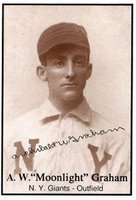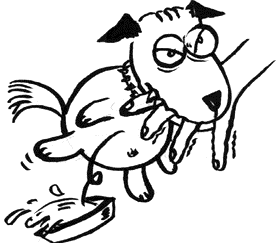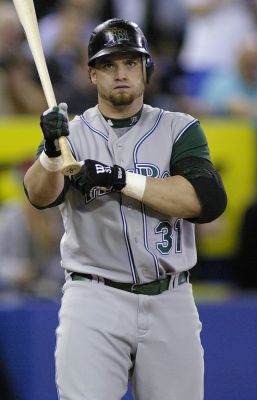 This is the time of year during which the first bad fantasy baseball trades are completed. Inordinately, a good portion of these trades are wildly uneven. A good deal of those responsible for these trades right now are managers prematurely pressing the panic button on quality players. This is the time of year during which the first bad fantasy baseball trades are completed. Inordinately, a good portion of these trades are wildly uneven. A good deal of those responsible for these trades right now are managers prematurely pressing the panic button on quality players.
Generally there are two reactions to uneven trades.
The most common is for a number of managers to veto the proposed trade. Thereafter, for the rest of the season, it turns into "veto" revenge, where everyone vetos nearly any trade that comes through, thereby essentially making free agency the only way to improve a team.
The next most common reaction is for leagues to take the philosophy that vetoes should be reserved only for cases of suspected collusion. This often results in a race to find someone willing to make a terrible trade - the only offers you see are obviously unacceptable to the informed. While Doc Gram prefers this to a veto-happy league, too often in these cases, the winner is determined not by who knows baseball the best, but who is most adept at taking advantage of the least informed managers in the league. Doc Gram calls it "Find the Sucker."
Doc Gram acknowledges this is part of the game - being the better negotiator, tricking other managers regarding your intentions, and doing whatever is necessary within the rules to improve your team.
But nothing is more frustrating in the first few weeks of the season than having carefully gathered what you think is a great team only to see your efforts put at risk by a competitor acquiring a slow-starting top 20 pick for someone chosen in the 14th round who happened to have a hot April. In these cases, the ignorance of the worst managers in your league - the Suckers - can be the biggest determining factor in who ultimately wins the league.
There's no use bitching about it, really. Once one of these trades has occurred in your league, if you weren't smart enough to be the one responsible for the heist, all you can do is use it as motivation to win in spite of the stacked odds against you and the skewed competitive balance in your league.
So Doc Gram will focus on prevention, like any good doctor would. Here are five signs you are being offered a Sucker trade. If you know the signs, you could be saving not only your team, but also maintaining the competitive balance of your entire league.
1. The trade involves sending fewer of your players away than the number you get back. Usually this is a "3 for 2" or "2 for 1" trade. While these sometimes can be perfectly fair, in most cases early in the season, the value received by the team getting more players isn't much higher than if that team traded an equal number of players and picked up the next best guy available in the free agent pool. So when evaluating these trades, look at the worst of the players you're being offered and ask yourself if there is someone equal or better in the free agent pool. Even if there isn't, you have to value the worst extra guy in the trade based on the difference between his value and the next best free agent player. Too often, Suckers just add up the stats on each side of the trade and come to the conclusion that they're getting more production than they're giving up. What they should be doing instead is also adding in the stats for the best free agent at the position to the "giving up" side of the equation, not to mention considering what you're losing out of the player you'll have to drop to accommodate the extra guy coming over. If you do this, giving up a star for two slightly above average players starts looking a lot less tempting.
Overall, winning in fantasy baseball requires consolidating the most talent possible into each roster spot - it's not like fantasy football where bye-weeks and injuries make depth the more important asset for much of the year. So these type of trades nearly never make sense, in Doc's opinion.
2. The person making the offer keeps stressing this year's stats in his emails. This is probably a good sign that the guys that the manager is offering are currently overachieving and he's trying to sell high. Nearly every major league player will have two or three weeks this year during which he outperforms his peers. Weeks 1, 2 and 3 are no more important to the standings and no more predictive than are Weeks 4, 19 or 22. What's predictive is 3-5 year player track records (go into stats from the minors in the case of youngsters), player age, season-long opportunity, and health.
3. The person making the offer is telling you that you urgently need a stat category or you'll be out of it. As said earlier, we're barely 4 weeks in to the season. Nothing is urgent at this point unless you have major injuries or are coming off of a horrible draft. Your opinions on your players should not have changed yet.
4. The offer made to you has sat open for more than a few days. Smart managers don't leave well-balanced trade offers open too long because they know that you could hit accept at a moment's notice should there be an injury to one of the players that you'd ship over in the trade. If they're willing to leave an offer on the table indefinitely, and they're still making other moves in the league, it probably means they think they'd get the upper hand on the proposed trade by a longshot.
5. Your counteroffers are ignored. If you think you've been offered a trade that will help with some immediate needs but you're not sure you're getting fair value overall, go back with a very fair counteroffer. People looking for sucker trades often won't even respond half the time, and if they come back with something even more uneven, you know you're being tested. Don't fall for the "last chance/final offer" line either - you'll get another chance at the player 99% of the time someone says this.
|














